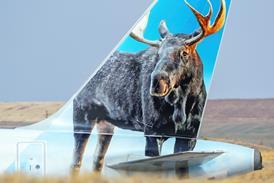The harsh global economic environment is having a heavy impacton the outlook for business aircraft deliveries in the coming decade,saysthe latest market forecast from the Teal Group.
Richard Aboulafia, Teal analyst and report author, predicts deliveries of 12,768 business aircraft worth $195.7 billion (in 2009 dollars) over the next 10years -including 9,300 business jets worth $153.7 billion, 575 corporate versions of jetliners and regional jets worth a combined total of $29.6 billion, and 2,893 business turboprops worth a total of $12.4 billion.
The forecast is in stark contrast to Teal's previous report issued a year ago in which it called for 18,401 business aircraft deliveries -including 14,289 jets -worth $270.6 billion between 2008 and 2017.
"This market has taken a very heavy blow," says Aboulafia. "Business aircraft have been hit harder by the economic crisis than any other aerospace market. After unprecedented growth, the market is falling at an unprecedented rate. All meaningful indicators -utilisation, prices, used aircraft availabilityand corporate profits - indicate a prolonged and painful downturn. Financing business jets is also more difficult than financing jetliners. Delivery numbers are falling fast, and we won't see a recovery to the 2008 peak level for many years to come."
Teal's forecast assumes a three-year downturn. The key demand drivers -economic growth and corporate profits -will only recover in late 2010/early 2011, it says."This means business jet deliveries won't start to recover until 2012. The trough year of our forecast -2011 -will see business jet deliveries reduced by 40% relative to 2008. Our forecast then calls for a five-year recovery period with 10% growth per year starting in 2012," says Aboulafia.
Of the traditional business jets, over 50% of these (by value) will be Class Four and Five -large-cabin and ultra-long-range types, including the Dassault Falcon 900EX, GulfstreamG550and Bombardier Global Express XRS.
"At the other end of the spectrum, Aboulafia has 'downgraded'very light jets from 'oversold'to 'irrelevant'.Our forecast includes just 2,263 of these types, including 1,105 Mustangs, 900 Phenom 100sand 258 HondaJets and nothing from anyone else," says Aboulafia.
Based on total unit value, Gulfstream and Bombardier will be the market leaders during the forecast period, with 23.9% and 22.9%, respectively, followed by Cessnawith 20.6%,Dassault with 16.8%, Hawker Beechcraft 8.8% and Embraer 6.3%.
"While Embraer and Honda are successfully entering this market, we do not see any other new players emerging. The sudden market crash, the stigma currently associated with business jet use, and a pattern of new business aircraft company failures will deter funding for new concepts and start-ups.
"New players may acquire existing assets, however, particularly if any assets are put on the market with distressed price tags. In fact, given uncertainties at Hawker Beechcraft and Cessna's parent company Textron, there are strong prospects for major industry restructuring in the months ahead. As a company that derives the bulk of its revenue from defence, General Dynamics has an advantage as a buyer in this market," says Aboulafia.
The report is optimistic that the current anti-business jet cultural environment - prompted by the misguided use of corporatejets late last year by the chief executives of three US car giants while appealing for taxpayer funded bailoutswill not persist as a long-term damper on demand.
"Preference for, and acceptance of, business aircraft will return when world economic growth resumes. Also, the past 13 years have seen business aviation transformed from a backwater market to a key part of the aerospace industry. This transformation will not be reversed."
Source: Flight Daily News




















